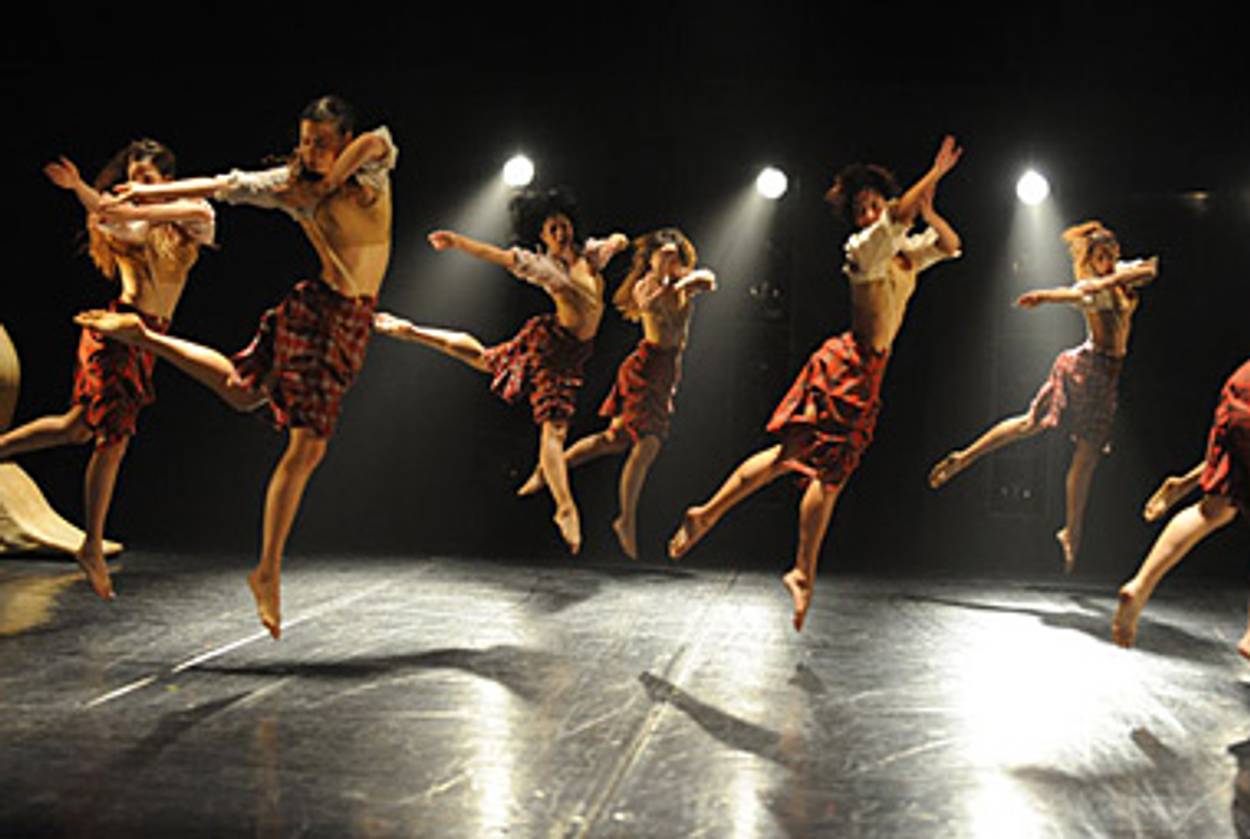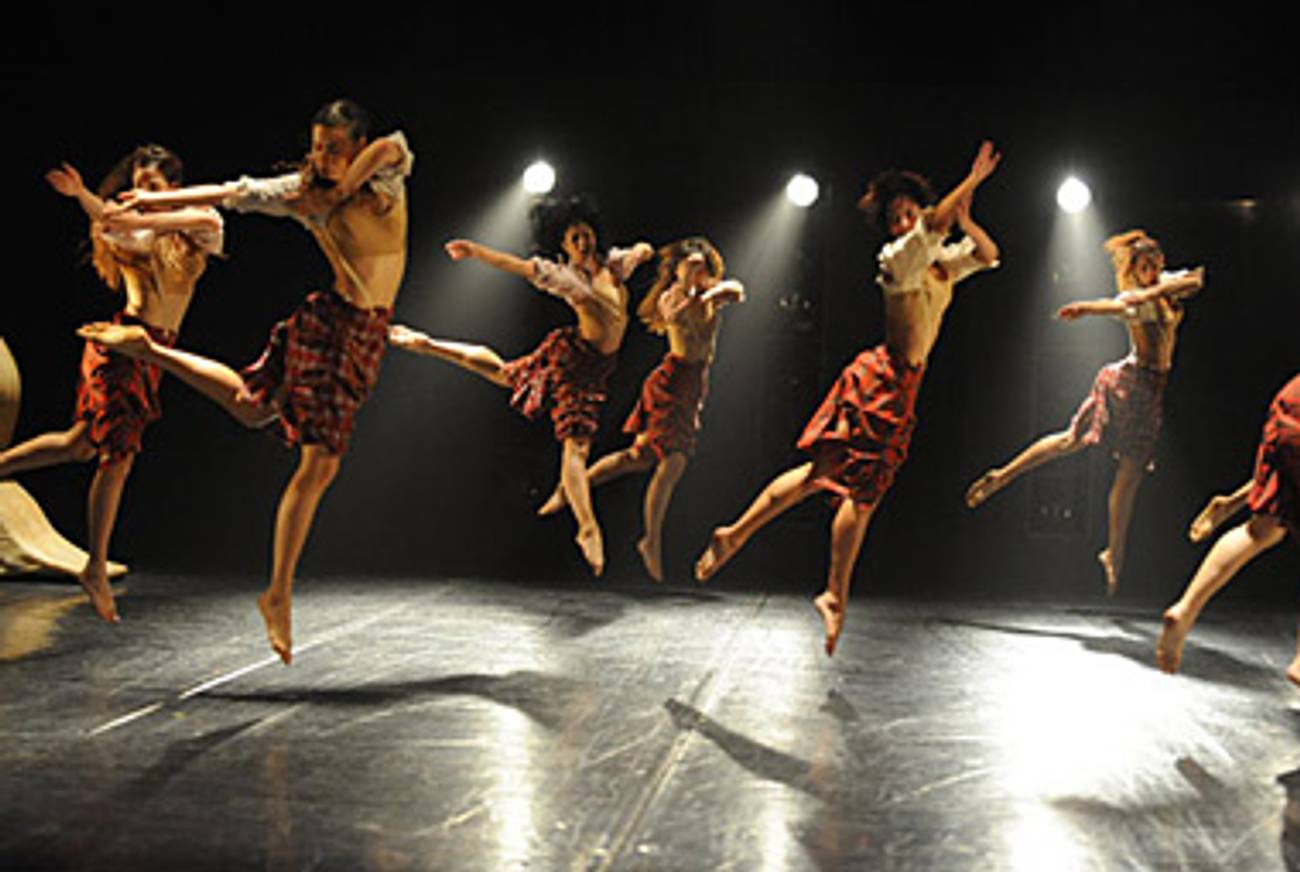State of Grace




In January, Israel’s ministries of culture, science, sports and foreign affairs held a six-day dance showcase at Tel Aviv’s Suzanne Dellal Centre. Hundreds of performers, deeply engaged with issues of gender, struggle and survival, came up against the market demands of bookers and promoters from international theaters and festivals. The performances proved that dance is not a universal language.
In Israel, even folk dance is a hybrid form. Rather than carrying traces of a mythic past, it was created by European immigrants trying to capture the spirit of their new home and express their ties to the land. Transforming borrowed materials became their metiér, and remains a significant strategy in Israeli dance today.
Modern dance in Israel got a jump start in 1964 when Martha Graham, with Baroness Batsheva de Rothschild, founded Batsheva Dance Company, seeding the country’s aesthetic with her fraught, emotional style. Still the preeminent Israeli troupe, Batsheva—directed since 1990 by Ohad Naharin—now manifests a louder, more politicized approach to choreography, incorporating spoken word and song into its collage-style offerings.
Today, Graham’s heart-tugging, imagistic methods, the leotard-clad female abstractions of early modern, are mostly gone from Batsheva and smaller Israeli ensembles. Most of the female Israeli dancers now perform bare-legged, their powerful limbs slicing the air, representing themselves rather than some remote idea.
Israeli choreographers have recently taken inspiration from German tanztheater choreographer Pina Bausch’s elegant, episodic style, full of ambiguous sexuality and self-absorption. Three different pieces featured bright red pumps, often worn by men. Naturalistic movement forms like contact improvisation and release technique—American innovations that honor gravity rather than attempt to deny it, as ballet does—have become integral to Israeli dance training, giving their bodies a freedom and boldness appropriate to a culture engaged in constant struggle. In counterpoint to this naturalness is a strain of surrealism that seems to flow from the rich cultures of Eastern Europe.
* * *
Most of the choreography at the event mobilized groups of energetic young people in which the women seemed distant or reluctant to commit, except perhaps to one another. Amir Kolben’s InterFace, inspired by online dating, was the only work spotlighting a relationship between men.
Numerous pieces included film in their design strategies, notably Kolben’s and White Noise, by Noa Wertheim of Vertigo Dance Company, which embedded monitors in the tops of high stools carried constantly around the stage, tilted to show us parched desert landscapes and other reduplicated visuals. There was always plenty to look at, but rarely a clear intention.
**pagebreak next=”10 dancers groveled before an invisible mistress until they couldn’t take it anymore.”**
Rami Be’er’s 60 Hz, for his Kibbutz Contemporary Dance Company, offered a high-energy, capoeira-inflected catalogue of Israel’s first 60 years, dressed dramatically and bewilderingly in designer Maor Tzabar’s military fatigues, floaty lingerie, and a dozen other styles (red tartan kilts? A tall, blond, female ostrich? A suicide bomber brandishing huge birdcages?). Endless costume changes accompanied vignettes representing many stages of Israeli nation-building, from explosive wars to landscapes transformed; a series of identical sculptural set pieces served as waves, bridges, walls, chaises, podiums. A visual delight, it fell short of delivering narrative punch, concluding with an album-style “photo op.”
Like 60 Hz, many of the dances were picaresques, collections of incidents strung like beads against collage scores. The most successful of these, Barak Marshall’s hour-long Monger, explored the compromises members of the underclass make in order to survive. To pounding, fast-paced recorded music by Frank London, Goran Bregovic, Balkan Beat Box, Verdi, the Yiddish Radio Project, and the choreographer’s mother (pioneering Yemenite choreographer Margalit Oved), 10 dancers groveled before an invisible mistress until they couldn’t take it anymore, meanwhile displaying the physical outlets they found for their off-duty hours—boxing, whoring, and courting. The piece made imaginative use of stage space and flying bundles of shmattes, but grew exasperating with its choppy, inconclusive, almost vaudevillian structure.
**pagebreak next=”They were erotic in the manner of kids playing doctor, obsessed with self-presentation but unclear how to actually relate to others.”**
While Yiddish is not exactly banned in secular Israeli society, its use has not been encouraged, so to discover a taut, surrealistic physical-theater rendering of Ansky’s The Dybbuk was a real pleasure. Choreographed and performed by Renana Raz and Ofer Amram, with live music for cello, contrabass, and the astonishing Israeli punk klezmer group Oy Division, this stunning work, titled Ov, demonstrates the striking way postmodern theater techniques can serve traditional, even surreal, material.
Yasmeen Godder, a younger Israeli choreographer who worked in New York until 1999 and is now based in Jaffa, showed Singular Sensation, one of the weirdest pieces on view. It featured a quintet of flashy performers channeling lost adolescents, spewing green barf and spreading red Jello on the floor, to music by the likes of Throbbing Gristle and Panda Porn. Dressed in sparkly clothes with aggressive red fingernails, screaming, fighting, they were erotic in the manner of kids playing doctor, obsessed with self-presentation but unclear as to how to relate to others.
Naharin, Israeli-born but now an American citizen, told me two years ago that support for the arts in Israel hovers between European generosity and American parsimony. Americans drool over the Suzanne Dellal facility, which contains four theaters and several studios, as well as a café, an Italian restaurant, an ice cream parlor, and an orange grove, all surrounding a huge stone plaza, bubbling with fountains and full of families in the afternoons.
While practically everyone in the Israeli dance community knows everyone else, the artists travel widely and experiment with a diversity of style and intention that continues to surprise. American dance is in the doldrums, but the Israeli choreographers display a willingness to experiment, fumble and fail that may well lead to a new flowering.